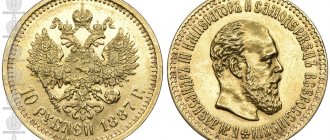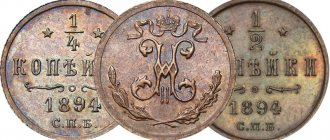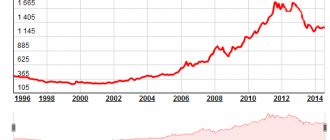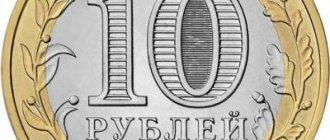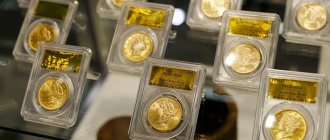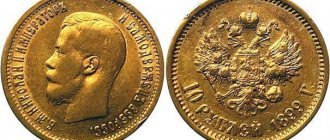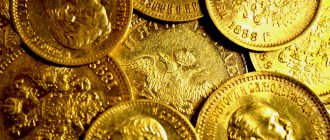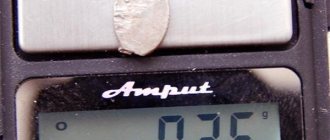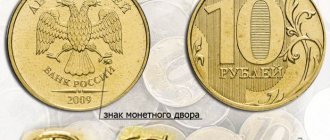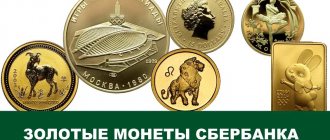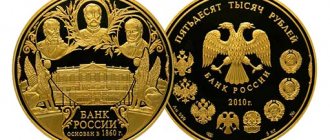Jewelry with royal gold coins
The Golden Flamingo brand is the only jewelry brand that produces custom jewelry with authentic royal gold coins. This unique line of jewelry from Golden Flamingo includes pendants, bracelets, cufflinks and rings featuring historical Russian gold rubles dating back to the era of Russian Tsar Nicholas II, a contemporary of England's King Edward VII and US President Theodore Roosevelt.
Russian gold rubles of Tsar Nicholas II are the only gold coins of the states of Central and Eastern Europe of the late 19th and early 20th centuries, which are still well known and valued throughout the world. These coins of an empire that has passed into history are to this day completely liquid, having a hard dollar equivalent, with the advantage that with every year that moves us away from the day of their issue, the time factor raises their value, steadily turning it into a rarity.
The obverse of gold coins issued in 1897-1911 is the same. On it there is a portrait of the Emperor of Russia Nicholas-2 and the inscription: 'B.[-ozhy] M.[-ilost] Nicholas II Emperor and Autocrat of the All-Russian[-iysky]'. On the reverse of the coins there is a small state emblem of the Russian Empire in the form of a double-headed eagle holding a scepter and an orb in its paws. On the edge (edge) of the coin there is a design reminiscent of a “Greek key” (on a coin of 5 rubles) or there is an inscription in depressed font about the content of pure gold (on coins of 7 rubles 50 kopecks, 10 and 15 rubles).
ⓘ Encyclopedia | Semi-imperial - five rubles in gold 1895 - Wiki ..
Buy 5 rubles Nicholas 2.
Price of the coin 5 rubles 1895 AG, semi-imperial: cost. Semi-imperial Nicholas 2 5 rubles in gold 1895 copy of a gold coin proof exact copy of a coin 5 rubles in gold 1895 semi-imperial. Coin 1895 price in Ukraine. Price of gold coins of Nicholas 2 and profitable purchase Club Numismatist. Buy 5 rubles in gold 1895 half-imperial Nicholas 2 copy of the PROOF coin in the online store for 150 rubles. 1 ruble 1895 price in Ukraine. Semi-imperial 5 Rubles 1895, AG Russian Heritage. 5 rubles in gold 1895 – 5 rubles 1895 AG Semi-imperial semi-imperial. Catalog number: Bitkin: 320 R3 Ilyin: 100 rub. Petrov: 75 rub.
Coins 1895 price.
Coin 5 rubles in gold 1895 AG. AU state. Nicholas II. Behind the circle, along the edge, is the inscription: on top, above the eagle POLUIMPERIAL, below, under the eagle 5 RUBLES GOLD. 1895 Inscriptions. 5 rubles 1898 price. Coins of Nicholas II: cost, catalog, prices and passages. Pure gold: 5.805 g. Diameter: 21.3 mm. Obverse: on top along the edge of the coin there is the denomination POLUIMPERIAL, below on the right and left. 7 5 rubles Nikolai 2 price. Gold and silver coins of Nicholas 2, their value and circulation. Coins in UNC condition are much more valuable. Semi-imperial 1895 5 rubles in gold. Semi-imperials were also produced for three years.
Gold and silver coins of Nicholas 2 CLUB VKontakte.
5 rubles in gold Au 5 rubles in gold semi-imperial 1895-1896, 2 pcs. 5 rubles Au. Semi-imperial 5 rubles 1895 AG gold coin price. The top lot of the auction will be the semi-imperial of Nicholas II of 1895. Gold semi-imperial - 5 rubles, minted in 1895.
Coins of Tsarist Russia Gold coins – Nicholas II.
Copy of the gold coin 5 rubles 1895 semi-imperial Nicholas 2, PROOF. The original semi-imperial of Nicholas 2 5 rubles of 1895 was. Collectible gold coins of Tsarist Russia In Russia. On July 20, 1895, the State Bank was allowed to accept gold coins for 5 and 10 rubles, as well as imperials 15 rubles and half-imperials. 5 rubles in gold 1895 semi-imperial Nicholas 2 copy. Test gold coins: semi-imperial 5 rubles, imperial 10 rubles, Based on the results of the monetary reform of 1895-1897, carried out by the Minister of Finance. Since 1897, mass minting of gold coins in a new foot began. The weight of pure gold in a five-ruble coin is eighty-seven and. Price 5 rubles 1895, AG, semi-imperial. From 1825 to 1855, Nicholas I on the throne of Russia Nicholas I Nicholas I issued the following coins: Silver coin 1 ruble 5 rubles in gold Semi-imperial Var 2 Coin differs from the 1895 issue. 5 rubles 1895 price, coin value Coin Warehouse. Review of gold coins 15, 10, 5 and 7 rubles 50 kopecks from 1897. events in the shadow of which remained the monetary reform of 1895-1897. She was escorted through.
5 rubles 1895 Semi-imperial, a copy of a copy of the royal coins.
Buy a tsarist gold coin Semi-Imperial 5 rubles 1895 AG. Descriptions from catalogs and high-quality photos of coins. Delivery across Russia. 5 rubles in gold 1895 semi-imperial of Nicholas II. Auctions, purchase, sale, valuation of coins, medals, coin-like tokens. Semi-imperial 5 Rubles 1895, AG. Price of the semi-imperial coin 5 rubles 1895 AG: cost. Evaluation of the coin 5 rubles Semi-Imperial 1895. Telephone Below are the denomination and date of issue of the 5 RUBLE GOLD coin. 1895 G. Po. 10 rubles from 1896 sold for 9 million rubles MDREGION.RU. Rus imperials semi-imperials five rubles chervonets. Imperials began to be issued in 1895, and were minted within two years.
Russian money is the topic of a scientific article on history and archeology.
Photo 1 shows the obverse of the coin 7 rubles 50 kopecks, 1897, with a wide one on the rare test coin, semi-imperial 5 rubles in gold, 1895. Russian Rual: milestones in the history of the Bank of Russia. 5 rubles. Semi-imperial 1895 AG. Nicholas II. Semi-imperial alternative denomination 10 RUBLES IN GOLD, to the right the year of issue is 1895. 5 rubles 1895: cost, photo Planet of coins. The price tag of a coin with a face value of 5 rubles from 1895 directly depends on its condition. Moreover, if you want to buy or sell a coin of 5 rubles of 1895 without evaluation There is a coin of 5 rubles of 1985 in gold imperial, write to the post office 1895 semi-imperial, excellent condition, In St. Petersburg. 5 rubles 1895 AG Semi-Imperial. Nicholas 2 gold price. This semi-imperial was minted for only three years from 1895 to 1897, and the denomination of the coin is indicated under the eagle: 5 RUBLES IN GOLD 1895. 15 rubles in gold and other coins of 1897 of Nicholas II. Coin 5 rubles 1895 AG semi-imperial. gold Nicholas 2, Bitkin 320 R3. Coin price and passage at auctions in Russia and the world.
Reverse of the royal gold coin 5 rubles
Dimensions: diameter 18.55mm, thickness 1.15mm. The total weight of the coin in perfect condition is 4.3013 grams. The pure gold content is 3.87 grams or 0.1244 troy ounces (1 troy ounce = 31.1 grams). Sample: 900.0 (21.6 carats).
History of the coin: minted from 1897 to 1911. The rarest coins date back to 1906 (10 pieces were issued - auction price from $95,000US) and 1907 (109 pieces were issued - auction price from $27,000US). Very interesting are the coins of 1900, when their issue amounted to only 31 thousand pieces, 1910 (200 thousand pieces) and 1911 (100 thousand pieces).
Gold 7 rubles 50 kopecks minted 1897
Golden Imperial
During 1896, the Russian Empire prepared an exchange fund for gold coins of 500 million rubles, which served as a considerable help for the start of exchange operations and the introduction of gold coins into wide mass circulation, that is, the introduction of the Gold Standard.
The means of forming Russia’s gold luggage were purchases (grain trade: “we won’t eat it ourselves, but we’ll export it”
) and gold mining. At the end of the 19th century, precious metal was being mined in full force on the territory of our country. By 1893, gold production in Russia amounted to 17.7% of world production (41,842 kg) and, as a result, the Russian state rightfully took the prestigious 4th place. In total, during 1881-1897, Russia's gold reserves increased 3.5 times.
During the period of monetary reform, the weight of a gold coin of 10 rubles was reduced by one and a half times: from 12.9 grams to 8.6 grams. At all times, the governments of many countries, in order to reduce the cost of producing money and increase government revenues, resorted to such a decrease in the standard and coin count.
During the interregnum, when the Alexander gold tens were replaced by the Nicholas gold tens, several interesting gold coins were produced, which became decorations in the collections of modern numismatists. It was at this time that they tried to change the name of the national currency of Russia to the extraordinary “Rus”. Finance Minister Witte contributed to the emergence of this unique coin. Only samples were minted - coins with denominations 5
,
10
and
15 russ
(corresponding to one third, two thirds and one imperial) with ligature weights of 4.3, 8.6 and 12.9 g (with a net gold weight of 3.87 g, 7.74 g and 11.62 g) and had a diameter of 19 ½, 21 and 24 mm, respectively.
On the front side there was a portrait of the king, and on the back - the denomination and the coat of arms. The peculiarity of the “Russian” coins was the edge, which did not contain patterns or inscriptions. The definition of “rus” was analogous to the name “franc” in France, especially since in that century the “Russian style” was fashionable in high society. But the emperor rejected the proposal to introduce the Rus into general circulation for the reason that Witte was trying to carry out an imperceptible devaluation in this way, and gold coins had already decreased in weight. However, later gold coins with a lower weight came into circulation, retaining their name.
Test coins - russ were produced in a meager circulation - only five sets. Modern professionals value a set of three coins at auction for more than 400 thousand US dollars. But all the sets have already found their owners. One set is in the collection of the State Historical Museum, the other belongs to the State Hermitage. The third set became the property of the Smithsonian Museum in the USA. Another was broken into coins, which were sent to private collections. The fifth set also belongs entirely to a private collection.
Imperial 15 Rus 1895 (12.9 g Au 900), edition 5 pcs.
Gold 7 rubles 50 kopecks (so-called 'semi-imperial') Nicholas-2
Dimensions: diameter 21.5mm, thickness 1.3mm. The total weight of the coin in perfect condition is 6.4516 grams. The pure gold content is 5.81 grams or 0.1867 troy ounces. Sample: 900.0 (21.6 carats).
Coin history: rare coin. Minted in 1897 in a limited edition for Russia of 16 million 829 thousand pieces. Has the edge inscription 'Pure gold 1 spool 34.68 shares'.
Note: 1 spool=96 shares=4.266 grams
10 gold rubles minted in 1909
Story
From 1895 to 1898, a monetary reform was carried out, which involved minting coins without reducing the weight of imperials, but their mass production was not carried out[1]. However, in 1895, a semi-imperial was minted - five rubles in gold, which belongs to the category of donative coins[2].
Description
This coin was made of 900 gold; its diameter is 21.4, and its weight is 6.45, pure gold - 5.81. On the edge there is the inscription “PURE GOLD 1 ZOLOTNIK 34.68 SHARES (A•G)”[1][2][3][4].
The obverse of the semi-imperial features a right profile portrait of Nicholas II. Circular inscription: “B. M. NICHOLAS II EMPEROR AND AUTOCRET OF ALL RUSSIA.” A serrated rim is located along the edge. The reverse depicts the coat of arms of the Russian Empire of the late 19th century - the imperial eagle in a dotted rim. Circular inscription: “✿ POLUMIPERIAL ✿ 5 RUBLES IN GOLD.” 1895 G»yu The jagged rim is located along the edge[1][2][3][4].
In addition to 1895, this coin was minted in 1896. The semi-imperial has no varieties (Bitkin #320/R3)[4].
| Semi-imperial - five rubles in gold of Nicholas II | |||||
| Year | Bitkin catalog number | Approximate rarity according to Bitkin's catalog | Variety | Description of the variety | Circulation |
| 1895 | #320 | R3 | — | — | 36 |
| 1896 | |||||
Gold 10 rubles (so-called 'chervonets') of Nicholas-2
Dimensions: diameter 22.63mm, thickness 1.55mm. The total weight of the coin in perfect condition is 8.6026 grams. The pure gold content is 7.74 grams or 0.2489 troy ounces. Sample: 900.0 (21.6 carats)
History of the coin: minted from 1898 to 1911. The rarest coins date back to 1906 (10 pieces were issued); coins of 1909 (50 thousand pieces), 1910 (100 thousand pieces) and 1911 (50 thousand pieces) are of increased interest. Has the edge inscription 'Pure gold 1 spool 78.24 shares'.
Note: 1 spool=96 shares=4.266 grams
15 gold rubles minted in 1897
Features of coinage in the Russian Empire
Archaeologists date the first Russian coins to the 10th century, but the turning point is considered to be the 17th-18th centuries. During that period, the reforms of Peter I laid the foundations of the monetary system that we still use today.
When Peter I began to rule in the monetary system, not everything was smooth. Not long before, wire coins were in circulation in the country (pieces of wire were cut off and then flattened with a hammer blow), mints experienced a shortage of raw materials. Foreigners, in notes about Russia, noted the low quality of Russian money, uneven shape and other shortcomings.
The reform of Peter I is notable for the fact that for the first time in Europe a decimal number system was introduced. Previously, the unchangeable ruble circulated throughout the Russian Empire, but now the penny has become the minimum monetary unit. There were 100 kopecks in the ruble; there were no analogues in Europe at that time.
The Russian Empire also owes the monetary reform and the emergence of its own money to the fact that Peter I was unable to immediately solve the problem of the shortage of raw materials for mints. It even went so far as to re-mint foreign coins, but this was not enough.
Among the coins of those times there are real treasures. You can buy royal gold coins now, but their cost reaches millions of rubles.
Prominent representatives of the era of the Russian Empire
Below we list the most valuable coins of that era. Some of them will earn you millions of rubles.
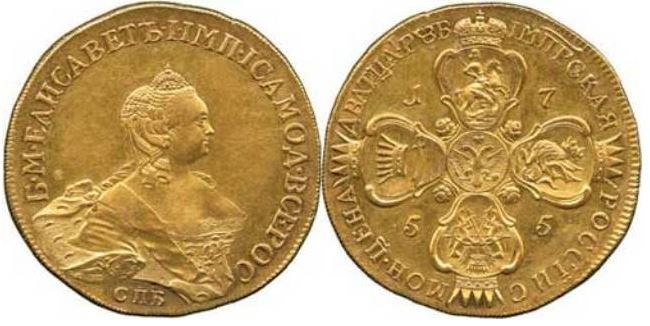
Semi-imperials
A coin with this name appeared in 1775, but numismatists are of particular interest in the semi-imperials minted under Nicholas II. In 1895-1896 The annual circulation was 36 units.
Semi-imperials were minted from 900-carat gold. The precious metal in the coin is estimated at 16.4 thousand rubles, but collectors for a semi-imperial give from $40 thousand. As for the upper limit, they talk about 9 million rubles per copy in Proof condition.
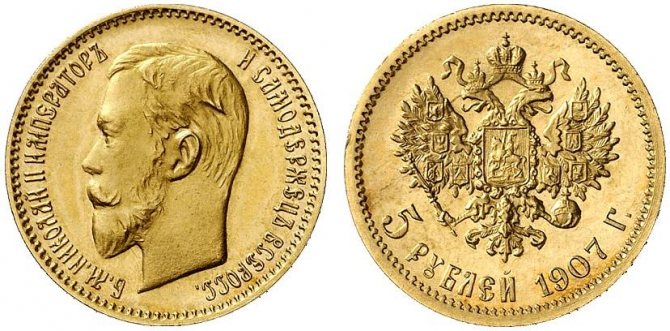
The semi-imperial symbolized the sovereign's focus on cooperation with Europe. Thus, the weight of chemically pure metal (5.807 g) corresponds 100% to the European 20 franc coin.
Imperials
The mint minted them during the same period as the semi-imperials. 125 copies of these coins were issued, which determined their value. You can earn from $50,000 for this coin; prices are comparable to the cost of a half-imperial.
Upon a quick inspection, the imperial is confused with chervonets. But the latter are lighter (8.6 g versus 12.9 g), and due to the millionth circulation, they are estimated at $2000-$3000. You can still buy gold coins of this type from Tsarist Russia; they are considered as investment coins. The design of the imperial is 100% identical to the semi-imperial.
In January 1897, Witte initiated a monetary reform, according to which the gold backing of the coin remained the same, but the denomination changed from 10 to 15 rubles. That is, the ruble has been artificially devalued by 30%.
Fifteen-ruble notes of Nicholas II
It was minted in 1897-1899, but only 1897 was minted on the coin. The circulation was 11.9 million units, so fifteen-ruble notes are valued at $2000-$3000.
Depending on the characteristics of the coinage, the following are distinguished:
- samples with the last 3 letters in the word “Vseross.” for cutting off the neck of the sovereign's profile. They give up to 60-80 thousand rubles for them;
- with the last 4 letters completely included (probes) - collectors will pay up to 2.2-2.5 million for them as UNC;
- probes with an enlarged head profile of Nicholas II - up to 3.6-3.7 million rubles.
These coins are considered both investment and collectible.
25 rubles or 2.5 imperials
One of the most expensive coins of Nicholas II. The circulation was 350 units, the twenty-five ruble coin belongs to the category of commemorative coins and was minted:
- in 1896 in honor of the coronation of Nicholas II;
- in 1908 - in honor of his 40th anniversary.
In both years, the mint minted 175 copies of twenty-five ruble notes. The coin contains 29.03 g of pure gold, valued at 82-85 thousand rubles at current prices. At auctions, the cost of coins sometimes exceeds 10 million rubles.
Historical fact - for the first batch of twenty-five ruble notes, a solid gold nugget from Siberia was used as raw material. There is information that in 1910, Prince Georgy Mikhailovich ordered an additional 25 copies of the 1908 model. It differed from the 2.5 imperials of 1896 only in the minted date.
These gold coins of Tsarist Russia acquired value due to their circulation.
Rus - failed Russian money
Nicholas II planned to divert attention from the devaluation of the ruble by issuing the Rus. As a result of the monetary reform of 1897, the ruble devalued by a third. Then, with the remaining monetary support, a gold imperial began to cost 15 rubles instead of 10.
The matter did not go further than samplers. They planned to mint coins in denominations of 5, 10 and 15 rubles, but in the end only 15 copies left the mint.
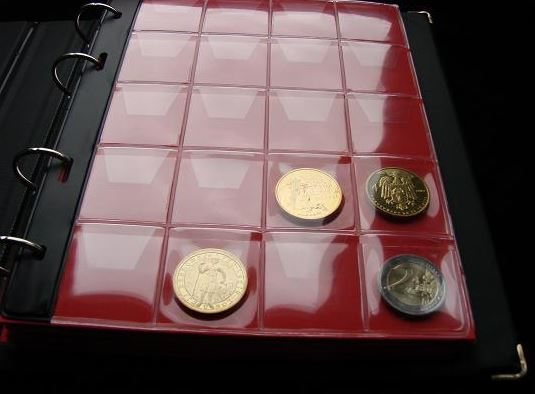
Russes are not found on the open market; the coins end up in private collections and museums. If the Russian is put up for auction, the price at the start is unlikely to fall below $500 thousand.
Five rubles and “seven-fifty” 1897
This year in the history of the Russian Empire was marked by monetary reform and devaluation of the ruble by a third. This was the reason for the minting of new coins.
Previously, the denomination of the five-ruble note corresponded to 50% of the imperial (the main monetary unit of the Russian Empire). After the reform, it became equal to a third of the imperial.
The five-ruble note was minted for several years. The annual circulation reached 7 million copies, which determined the cost of the coin. Without damage, the coin is estimated at $1-$2 thousand.
After the devaluation of the ruble, the old semi-imperials were withdrawn from circulation, and they were replaced by the new “seven-fifty” coin. Its denomination corresponded to half of the new imperial.
In 1897, the mint managed to mint 16.829 million coins. No rare varieties were identified among the circulation, so their cost is not much higher than the price of the yellow metal.
Slightly less common are samples with a wide edging. Collectors give up to $1000 for them, depending on the level of preservation.
100 francs or 37 rubles 50 kopecks
These are royal gold coins, the cost of each of which exceeds 5 million rubles. The exact purpose of the issue is unknown, there is a version that they were planned to be used either for settlements between France and the Russian Empire, or as a symbol of friendly relations between these states.
There is a version that Russian francs were minted as coins for gambling establishments. At that time, payments were made mainly in francs.
It is precisely known that there are 235 copies of this series; according to unconfirmed information, an additional 1 example was minted for the Hermitage. The circulation distribution by year is as follows:
- 1902 - out of 225 coins issued, 25 went to Prince George, and 200 to the Empress;
- 1903 - 10 copies were released on the initiative of Prince Vladimir;
- 1904 – 1 coin was minted and sent to the Hermitage. There are doubts about the truth of this information.
Among the features of the coin, we highlight the fact that on the reverse there are no initials of the mintmaster of the St. Petersburg Mint. Their place was taken by a star - the symbol of the Paris Mint. Another hint at the connection between the Russian Empire and France.
Towards the end of the existence of the USSR, a batch of remakes was released at the Leningrad Mint with a circulation of 50 thousand copies. Cupronickel silver was used instead of gold, and so that novice numismatists would not confuse them with the original, the letter “P” (replica designation) was minted after the date.
At auctions, the cost of the coin reaches $170-200 thousand. There are fakes, the gold content of which is zero.
Platinum 12 rubles
The Russian Empire became the only country in the world in which platinum was used for minting non-commemorative coins. In 1829, the minting of platinum coins in denominations of 3, 6 and 12 rubles began.
The circulation continued until 1845, and among the entire series, it was the 12-ruble denomination that turned out to be the rarest. In total, the mint minted 3,474 units of coins of this type. But in 1836 the circulation was 11 copies, and numismatists are hunting for them.
At auctions, such coins are sold for 3-4 million rubles with a tendency to rise in price. The remake of the second half of the 19th century did not change the situation with the cost of twelve rubles.
